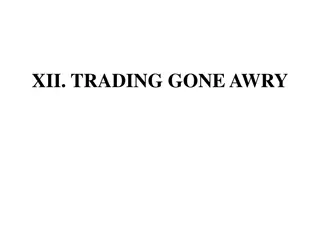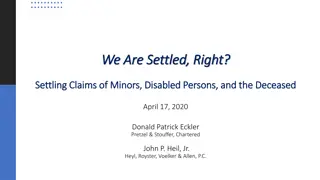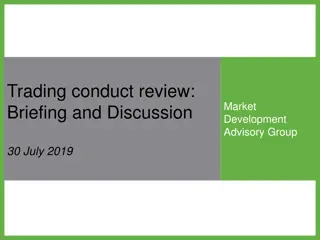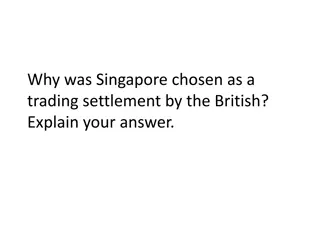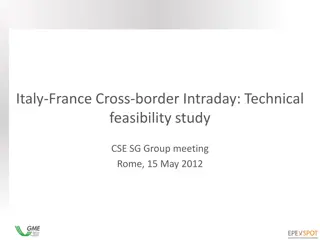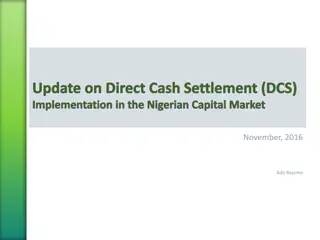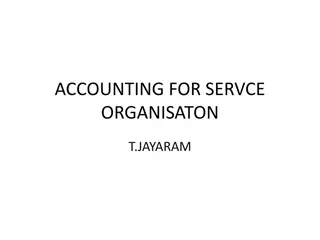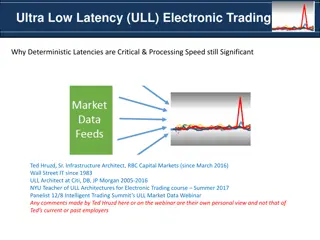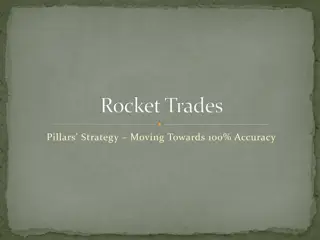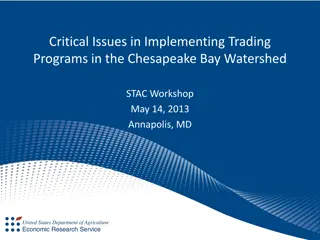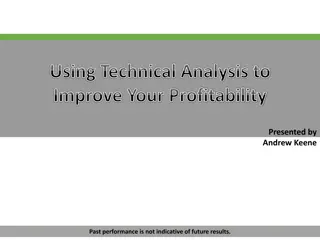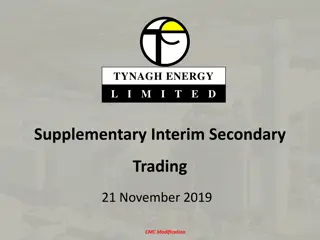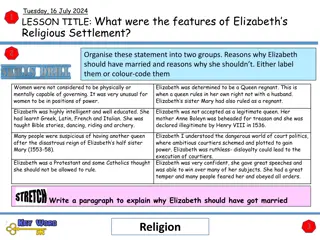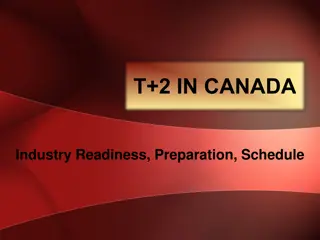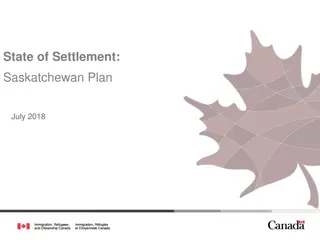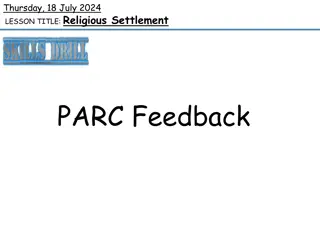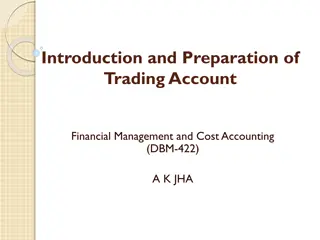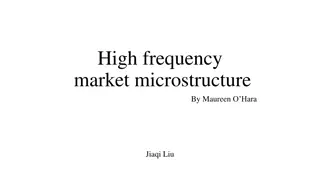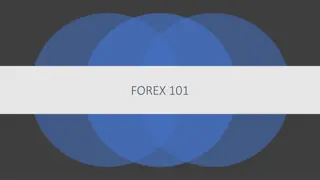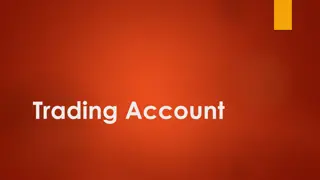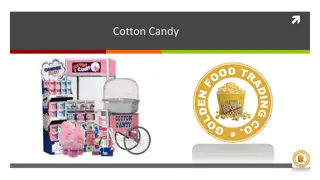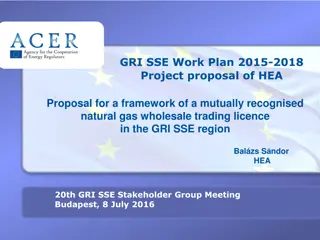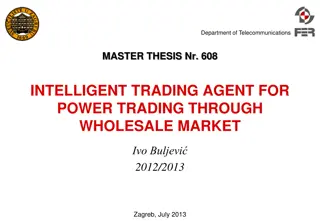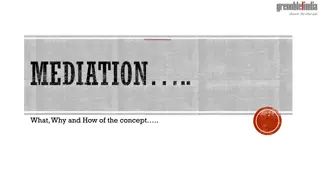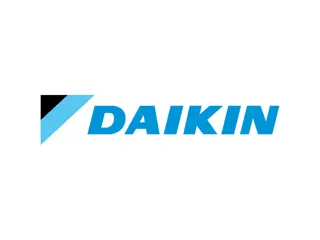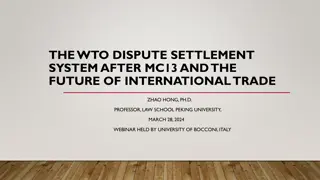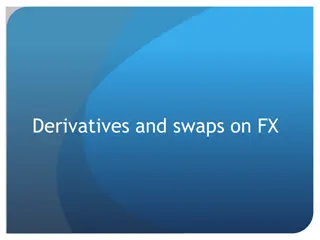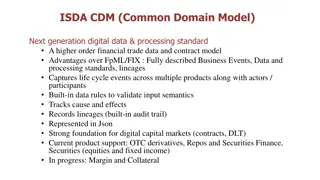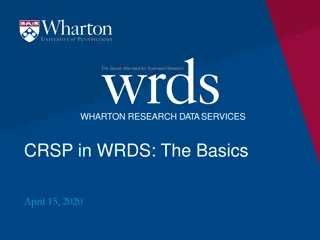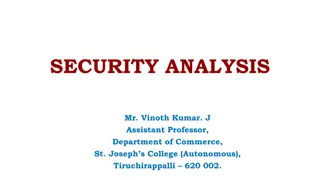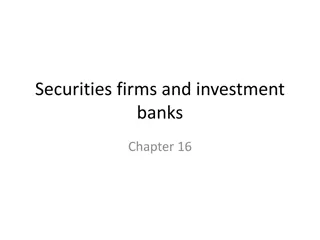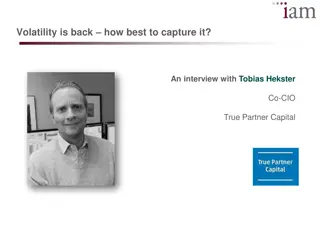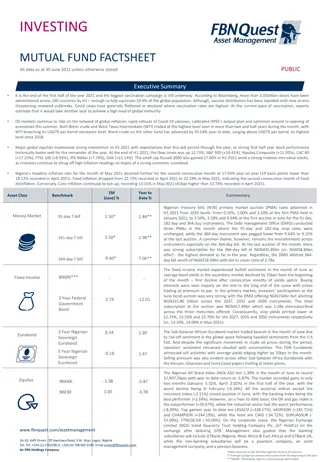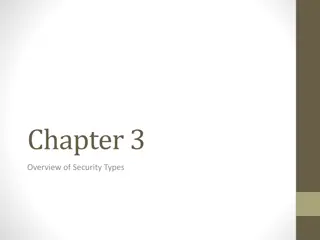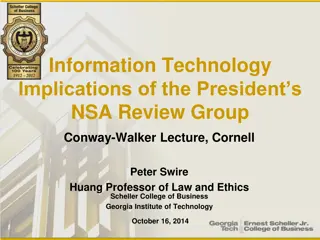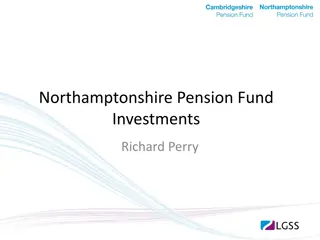Understanding Equities Trading and Settlement Processes
The process of trading and settling securities involves three stages - trading, clearing, and settlement. Trading can occur on- or off-exchange and may be quote-driven or order-driven. On-exchange trading involves market makers providing liquidity, while off-exchange trading matches buyers and sellers electronically. The London Stock Exchange's SETS platform is a significant order-driven system for trading shares in the FTSE All Share Index. Investors interact with deep order books and compete against queues to get their desired prices.
Download Presentation

Please find below an Image/Link to download the presentation.
The content on the website is provided AS IS for your information and personal use only. It may not be sold, licensed, or shared on other websites without obtaining consent from the author. Download presentation by click this link. If you encounter any issues during the download, it is possible that the publisher has removed the file from their server.
E N D
Presentation Transcript
CISI Financial Products, Markets & Services Topic Equities (4.1.11, 4.1.12 and 4.1.13) Trading and Settlement cisi.org
Process overview Before an investor finally owns or relinquishes securities, there is a 3-stage process they must go through: Trading seller for securities they want to Investors need to find a buyer or relinquish or own The obligations of the buyer and seller to a trade are defined and legally formalised. It establishes what each of the counterparties expects to receive when the trade is settled and defines the obligations each must fulfil, in terms of delivering securities or funds, for the trade to settle successfully. Clearing The ownership of a security is transferred from seller to buyer in exchange for the equivalent value in cash. Ideally, these two transfers should occur simultaneously. Settlement cisi.org
Trading Trading (buying and selling) shares and bonds is done either: On-exchange Off-exchange On-exchange Off-exchange Takes place through a recognised stock exchange, using a trading system Takes place directly between market counterparties away from an exchange. Also known as Over the Counter Quote driven system Order driven system OR cisi.org
Trading on-exchange Quote Driven On-exchange Quote driven system e.g. NASDAQ or SEAQ Market makers: 1. Work throughout the trading day 2. Provide continuous two-way (bid and offer) prices for particular securities 3. Make a profit through the price spread 4. Perform their function regardless of market conditions 5. Provide liquidity to a market which may have dried up without them A trading system employing market makers cisi.org
Trading on-exchange Order Driven On-exchange Order driven system matches buyers and sellers by Electronic Order Book e.g. LSE s SETS Auction Process e.g. NYSE floor OR Both match buyers and sellers in strict chronological order: By Price then By the quantity of shares being traded cisi.org
Trading on-exchange Order Driven - SETS The London Stock Exchange s main trading platform is SETS, which is used to trade shares that are contained within the FTSE All Share Index. (Investment banks and brokers) Deep Order Book This is used for liquid stock e.g. Vodafone the term deep implies that there are lots of orders waiting to be dealt on either side. These firms input orders for themselves or on behalf of client into SETS via computer terminals SETS system WITH Electronic Order Book Integrated market makers Orders added to one of 3 lists in the system Investors who add their order to these queues are prepared to hold out for the price they want Here, investors trade against the queue of buyers (if they are selling) or against the sellers queue (if they are buying). cisi.org
Other trading systems on the LSE The London Stock Exchange does not just use SETS. Due to the varying liquidity of shares and the need to trade fixed interest securities (corporate and government bonds), alternative systems are used: Trading Systems SEAQ Stock Exchange Automated Quotation ORB SETSqx SETS - quotes and crosses Order Book for Retail Bonds Offers continuous two-way pricing Not all shares are liquid enough to trade via SETS. For fixed interest securities and AIM stocks not traded on SETS or SETSqx Used for trading in UK gilts and retail-size corporate bonds SETSqx is for shares where the volume of shares traded is low. One of the last examples of quote-driven equity trading systems along with the NASDAQ It combines periodic auctions with quotes from market makers cisi.org
Process overview Before an investor finally owns or relinquishes securities, there is a 3-stage process they must go through: Trading seller for securities they want to Investors need to find a buyer or relinquish or own The obligations of the buyer and seller to a trade are defined and legally formalised. It establishes what each of the counterparties expects to receive when the trade is settled and defines the obligations each must fulfil, in terms of delivering securities or funds, for the trade to settle successfully. Clearing The ownership of a security is transferred from seller to buyer in exchange for the equivalent value in cash. Ideally, these two transfers should occur simultaneously. Settlement cisi.org
Process overview Before an investor finally owns or relinquishes securities, there is a 3-stage process they must go through: Trading seller for securities they want to Investors need to find a buyer or relinquish or own The obligations of the buyer and seller to a trade are defined and legally formalised. It establishes what each of the counterparties expects to receive when the trade is settled and defines the obligations each must fulfil, in terms of delivering securities or funds, for the trade to settle successfully. Clearing The ownership of a security is transferred from seller to buyer in exchange for the equivalent value in cash. Ideally, these two transfers should occur simultaneously. (Delivery versus Payment or DvP) Settlement cisi.org
Methods of Holding Title Before exploring how purchases and sales of shares are settled ie, how the seller gets his money and the buyer gets her shares. It is important to consider how ownership of a share is evidenced. Shares can be issued in either registered or bearer form, with the former (registered) being a lot more common than the latter (bearer). cisi.org
Holding title - How do you show that you own particular shares? Holding shares in registered form The investor s name is recorded on the company share register, and, often they are issued with a share certificate. Many companies have dematerialised their shares (They do not use physical share certificates) and use electronic records of ownership. This is known as issuing shares on a non-certified basis. Methods of Holding Title (Evidencing share ownership) Holding bearer shares The person who physically holds the share certificate is the owner or bearer . Ownership passes through transfer of the certificate to the new owner. Risky the certificate could be lost and so could the investment. cisi.org Provides opportunity for money laundering and tax evasion.
Settlement Registered and Bearer Shares Shares in registered form UK Companies Bearer Shares Required to keep and maintain a Share register a record of all current shareholders in that company, and how many shares they each Authorised depositaries They are usually kept safe in authorised depositories. These can be international organisations like Euroclear, or country based depositories like Singapore s central depository. hold. Bearer shares kept in this way are said to be Company registrar keeps and maintains the company share register - might be an employee of the or a specialist firm of registrars Immobilised Certificated settlement Historically, when selling these shares, the seller sent their share certificate and a stock transfer form, providing details of the new owner, to the company registrar. The registrar would delete the seller s name and insert the name of the buyer into the register. The registrar then issued a new certificate to the buyer. An electronic register is also kept by CREST so that trades can be settled electronically. cisi.org
Settlement Registered and Bearer Shares Shares in registered form Bearer Shares Over the past decade most UK settlement has moved to a paperless, dematerialised (or uncertificated) form of settlement through a system called CREST. Certificated settlement is cumbersome and inefficient Some investors still hold physical share certificates and they have been unable to benefit from shorter settlement periods. European markets to move to a standardised T+2 settlement period: Settlement of these trades usually takes place at: This reduction in the settlement period is intended to harmonise practices across Europe and help to reduce risk This allows all of the paperwork to be completed. As part of the changes to settlement periods, there are separate proposals to phase out the use of paper share certificates. cisi.org


